The Beatles trusted Giles Martin to enhance their sound – will the rest of us listen to him?
Alongside his father, Giles Martin famously resculpted The Beatles’ sound. Now he wants to change how we listen to the world’s biggest artists with a technical advancement not seen since the advent of stereo.
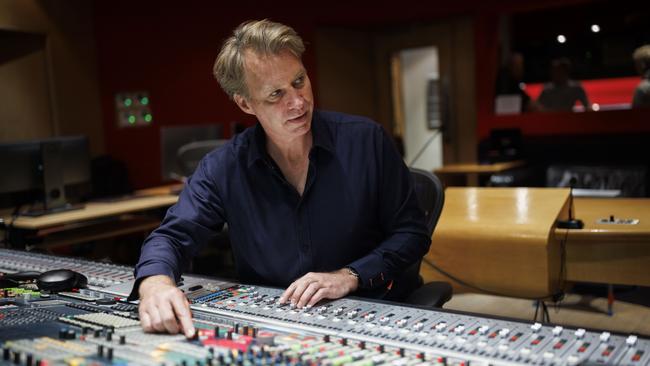
You can now listen to The Australian's articles. Give us your feedback.
Giles Martin leans closer to the computer screen at Abbey Road Studios and makes a surprising confession. “What’s actually made me different is I’m not very good,” Martin says. “You know, I do things the wrong way around but it works out.”
Witness British self-deprecation writ large. Martin – the son of record producer George Martin – is a Grammy award winner with a stellar career, who has been trusted to extend his father’s work by remixing the Beatles’ catalogue for a post millennial audience, from the 50th anniversary of the Sgt Pepper’s Lonely Hearts Club album in 2017 to Abbey Road, Revolver and ultimately the fab four’s final single, Now and Then, released last year, and which Martin co-produced.
Although he started out on this road with his father working on the revolutionary and artistically adventurous album Love, today Giles Martin stands on his own as one of the industry’s most in-demand record producers, taking calls regularly from the likes of Paul McCartney, the Rolling Stones and INXS.
Martin goes on to explain that he’s “not very good” because for him, success lies less in technical prowess and more in the imperfections embedded in music that has been the soundtrack to generations.
“My assistant is way more technical than I am. At my sessions he just shakes his head at what the hell I am doing and I go, ‘Yeah Joe, but people actually like it’.”
The people who “like it” include Elton John, with whom he is now working on a musical based on the 2006 film The Devil Wears Prada.
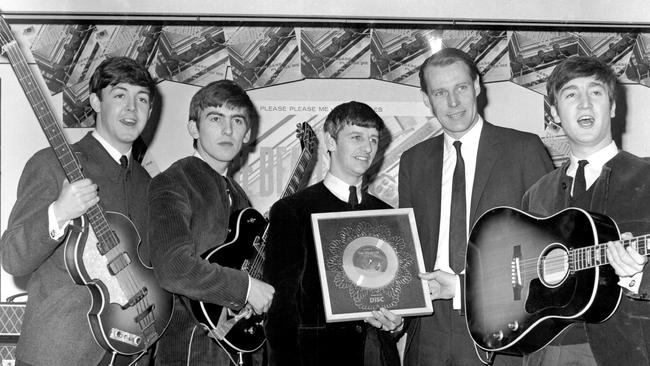
It is, Martin says eagerly, “something completely different” for him and Elton who have been collaborators since reworking the singer’s hits for his 2019 biopic, Rocketman.
Martin is speaking to The Weekend Australian Magazine from a room at Abbey Road that looks more like the cockpit of a plane, fitted out with a million pounds’ worth of speakers, mixing decks and all sorts of sound-tech wizardry. We’re actually here to talk about those speakers, or rather, a retail variation of them, but Martin clearly delights in every device that he has used to remix the classic Beatles alums.
Despite meeting over video, Martin is warm and chatty. When he opens our call with “G’day” it doesn’t sound cheesy, but an attempt at connection with this Australian journalist talking from a world away. The conversation flows as if over a pint at the pub – there’s one in London which springs to mind that has a photograph of the late Queen Mother taken in an East End boozer, sleeves rolled up and pouring a beer at some point in the late 20th century.
Now here is this scion of pop music royalty, his sleeves rolled up and ready to work, bristling with eccentricity as he spruiks the virtues of a genuinely extraordinary bit of kit; Martin’s full of self-effacing charm while at the forefront of the biggest audio format shift since the advent of stereo.
The late George Martin, Giles’ father and the man who would become known as the “fifth Beatle” for his inextricable contribution to their sound, grew up the son of a carpenter in a household with no electricity or running water, mired in poverty during the Depression. And yet there was always a piano in the house and young George famously taught himself to play. It was as a middle-management producer for record label EMI that he met the Fab Four.
Giles inherited his dad’s passion for sound. He mixed his first “spatial” record (essentially, recorded music that feels live) for a collaboration with his father; a mash-up of 130 fragments of Beatles records for Cirque du Soleil’s Vegas spectacular Love. He has previously described his father as a “futurist” who “loved technology”. With Love, “my dad was sort of guiding me creating, chopping up the Beatles’ tapes,” he tells me.
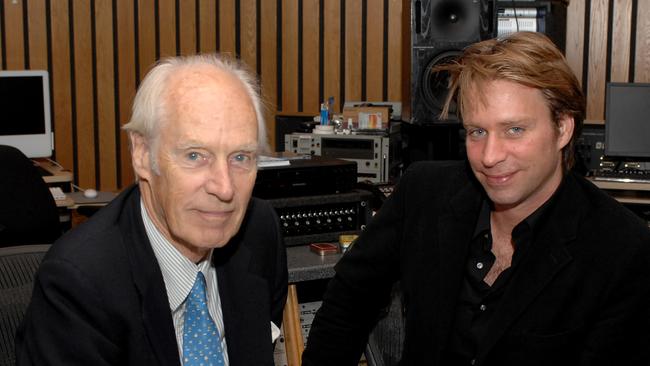
Love – which closed in July after an 18-year run at The Mirage hotel and casino – was the first show in Las Vegas to use recorded music entirely, with the album Martin and his father produced projected from almost 7000 speakers in a specially built theatre. For the show, Giles had created a soundscape that was truly immersive, showing the world what could be done with a recording-backed live performance.
“I realised I had to do something different. It was the first show ever being played in Vegas with just playback, there was no band,” he says. “I didn’t want people to spend $US120 on a ticket and think they’ve just listened to a flat CD. I wanted them to feel something … and I thought ‘Oh my god, this is the future of audio’.
“The question is, how do we translate that into a playback experience?”
Skip forward to 2012, and Dolby, the sound engineer lab founded by Ray Dolby in London at the height of the swinging ’60s, launched its Atmos technology. It was the spiritual encapsulation of Martin’s 7000-speaker set-up at Love, and Martin would become the go-to man for rock stars who wanted a Dolby Atmos spatial or “immersive” audio mix.
Anyone who has ever been to the movies knows Dolby surround sound, first unleashed on cinema audiences for Stanley Kubrick’s A Clockwork Orange and used on every blockbuster since. You may have surround sound in your living room. Dolby Atmos is an “upgrade” on surround, using audio filters to simulate how your ears naturally determine the direction and distance of sounds. If you haven’t spotted the Dolby Atmos label when streaming music on Apple or Amazon you’ll almost certainly notice it now. It’s been a game changer for the music we love, albeit a shift largely experienced in studios, concerts and cinema, even as manufacturers Apple, Sonos and Bose introduce it to consumers via headphones and speakers.
As for the latest hardware evolution, that began during the pandemic lockdowns when Martin found himself in a cottage with not much to do. Lying on the living room sofa, immersed in Atmos (as it happens, he was listening to a piece of classical music) with only the silent countryside to compete, Martin decided that everyone needed to have what he was experiencing. So he rolled up those sleeves and got to work on a new speaker that could deliver studio quality of sound into people’s living rooms.
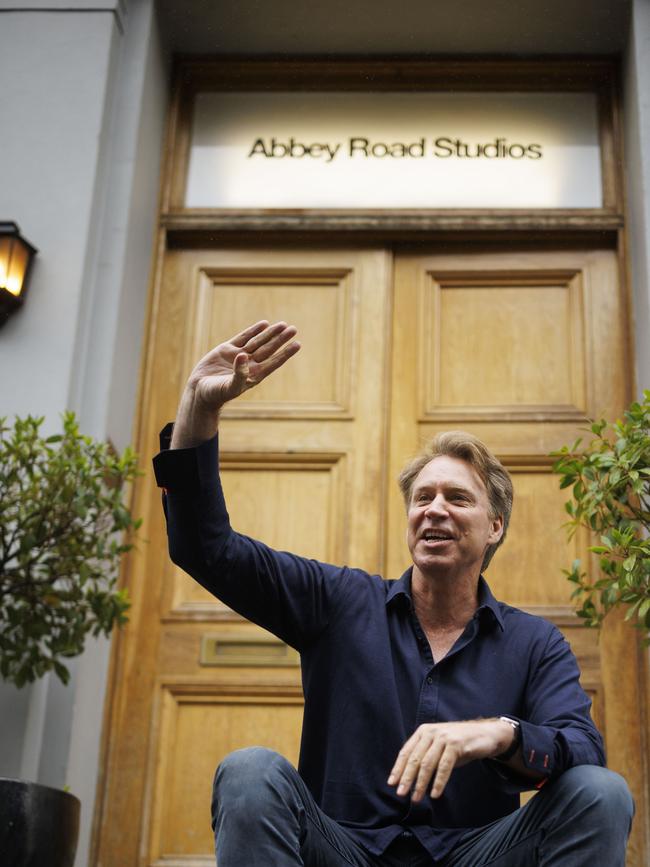
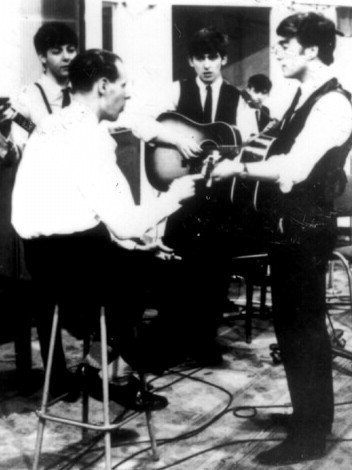
Martin had been recruited as “head of sound experience” at Sonos in 2012 by founder John MacFarlane – “he wanted there to be heart” in the company, Martin recalls, “and he realised that wasn’t him. He is actually a deeply passionate man but a software engineer.”
Martin’s job was to make the experience of listening to music through speakers a little less, well, perfect. “He wanted to put the juxtaposition between art and science, and he wanted me to go to the audio team and say, ‘Have you actually listened to this stuff?’ There is a reason why nothing is perfect! You can build anechoic chambers and have microphones around and lots of stuff but the human ear or human sensitivity is so much greater than that, and the way we perceive things is so much bigger.”
The speaker in the cottage where Martin spent the lockdowns would become the Sonos 300. Launched last year, it was the first speaker that was designed to deliver spatial audio out of a single box. “The Era 300 is essentially … folding down what I’m doing here,” he says as he gestures around the space at Abbey Road.
“The whole point of this is I’ve spent hours in this room, working on this song, whatever it is, and it would be nice if you could enjoy it … You seem very nice, but I don’t necessarily need to invite you around to listen to the music.”
The uptake has been mixed. One tech industry magazine review of the Sonos, headlined “Sonos 300: too ahead of its time”, went on to state: “When you find a good spatial audio song [the review lists Norah Jones’ Don’t Know Why, Boom by Sevenn and Tiësto, Exile on Taylor Swift’s Folklore album and Two of Us by The Beatles], Sonos’ new speaker can blow your mind and sounds like nothing else. But it trails the Sonos Five at stereo playback and suffers from the wildly inconsistent state of Atmos mixes.”
Of course, for Martin, his commitment to Atmos quality and authenticity is beyond doubt.
Take his remixed Nowhere Man for the Beatles 1962-1966 compilation album (known as The Red Album), released last year. There is an audible squeal after John Lennon sings the word “missing” at the 38-second mark – some say it was from headphone leakage as Lennon leant too close to the microphone while playing rhythm guitar and then jumped back.
“I never clean anything up. It’s a misconception and a bias,” Martin says.
“There are two things that people think: everything new is brighter. The other is that everything new is cleaner or is more compressed … which is not true as well.” Martin preserved the hisses – “it’s part of the noise” – as well as the dirt.
“The dirt on the tracks is really important,” he says. It’s “part of the character”.
But he really bristles at the criticism that came after resurrecting Lennon’s voice from an old demo tape for Now and Then.
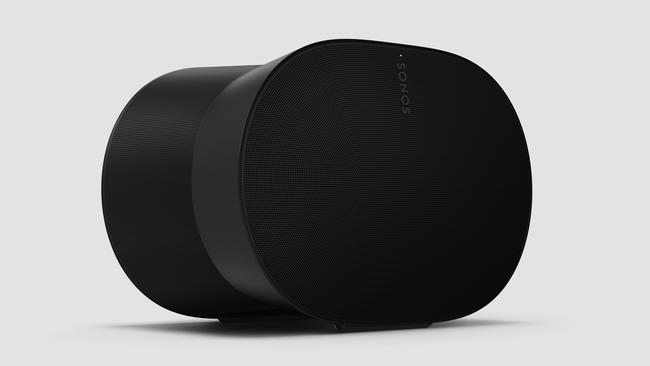
“[The suggestion] that it’s all AI is absolute bollocks. On Now and Then it was John playing the piano with a cassette recorder on top of his piano, while watching the television. So I ended up with room, television, piano, vocal.”
Martin sent the recording to New Zealand film director Peter Jackson, who used machine learning to isolate various instruments, vocals and other sounds that were previously fixed on one track to improve the sound quality on the Beatles’s Get Back documentary.
“I ended up with four tracks from one mono source. Nothing gets taken away or added.”
Then there’s Twist and Shout on The Red Album. “If you listen to the original stereo, you will hear all the reverbs and headphones spill on John’s vocal tracks. There’s a weird kind of drum thing going on the right hand side with the vocal on the stereo, which to me sounds wrong but really cool. So when I wanted the drums and vocal to be central for the new stereo mix, I had a problem. All of the stuff that was there needs to still be on the track because that was part of the character of the track.”
And then there was the time film director Martin Scorsese couldn’t tell the old from the new. It was when Martin worked on the 2011 Scorsese documentary George Harrison: Living in the Material World. He remixed Harrison’s masterpiece All Things Must Pass, co-produced by Phil Spector, lavishly adopting his “wall of sound” technique. “I did a mix of All Things Must Pass … and I get this phone call saying ‘Marty hates what you’ve done’. I said, ‘You’re not using what I’ve done!’”
Martin met Scorsese in person in London and played him two different tracks. “He goes, ‘This is the one I like … this is the one I remember’. But this wasn’t the record, this was the one we had done for the film. The record wasn’t how you remember it to be – All Things Must Pass is actually quite narrow. It’s Phil Spector but it’s quite compressed and small. It’s like the way we remember ourselves how we were.”
Martin shows me a little black box with several buttons that almost acts like a compass as he works. At a touch of any of these buttons he can compare the original mixes with his version. In a sense, it’s a time machine.
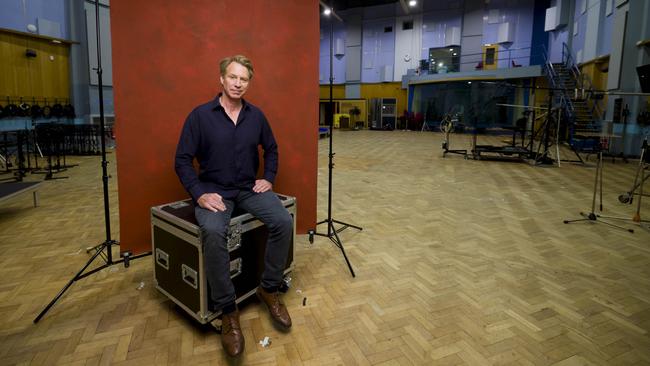
Right now he’s remixing INXS in Atmos. “I worked with them when I was younger, when I was 23 … we’ve been friends for years, that’s my Australian link! I’m mixing Kick, which was originally mixed by [multiple Grammy winning US producer] Bob Clearmountain, who is one of the best mix engineers in the world.
“I have to copy his stereo mix and find out all the stuff he used in 1988 and apply it to the multitrack and get the stereo sound right and then I … do the Atmos. I phone him up and say, ‘What did you use for the snare drum, or whatever it is?’ He can’t remember – and that becomes a total pain, because you want the Dolby Atmos record to sound like the record you know, but in Atmos.
“If you take the new Stones album Hackney Diamonds, which I didn’t mix … they mix the stereo and give it to me to make the Atmos, that’s really easy because it’s modern. The legacy stuff is really hard.”
In some ways, it’s still very early days for this tech. The barrier remains that spatial audio needs to be specially mixed in the recording studio and then played on the new generation of speakers and headphones that offer the technology. It’s not always a recipe for commercial success. The launch of quadraphonic audio in the 1970s was considered a commercial flop, given it needed records compatible with the format as well as expensive audio systems to produce the quality of sound promised. And it’s not only consumers who reject the newfangled equipment. The Beatles famously didn’t even attend stereo mixing sessions. George Harrison later said he believed at the time panning between two speakers was spoiling the sound. Despite being at the vanguard of Dolby surround sound, Stanley Kubrick wouldn’t mix his films in stereo for a similar reason.
“People are always looking for the sort of golden ticket. It doesn’t happen actually,” says Martin, who likens immersive audio to drinking fine wine. “It becomes bronze, silver and gold, and after a while it develops. You and I both know that people dismiss technologies far too early and then they are taken for granted later on.”
So what is the perfect listening format? “It depends on your mood and what you’re doing. I still think that you can be with someone you love and listen to cassette and a song that means a lot to both of you and it will sound like the best record ever made.”
Isn’t everyone listening to music on their phones now anyway? Could Dolby Atmos streamed from an iPhone beat the original vinyl record?
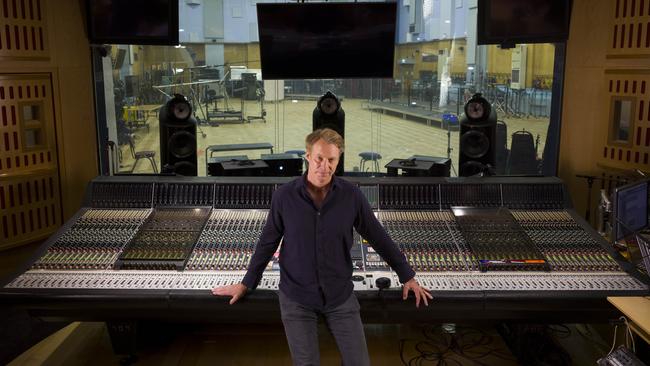
Martin the Sonos representative says he prefers to listen using speakers in a room – but it’s clear he’s speaking from the heart when he says that experience should be shared with others. “One of the biggest disappointments I’ve had, and I suppose sort of in my Machiavellian way of looking at audio, is I wouldn’t have thought the best entrance for spatial audio would have been headphones,” he says grimly. “I think that has affected people’s perception of spatial audio but it’s getting better.
“I think we’ll look back on phones and a lot of this stuff … almost like smoking. I think we have way too much input into our brains that have stopped us from thinking in some way. It’s interesting watching my kids and how they limit their activities and how they want to just listen to music – it’s what they look forward to when they get into the car. We’ll listen to things and sit and talk about it.
“That’s why I’ve been passionate about trying to build products that people really enjoy. It’s why I try to make stuff in the right way. It’s just so people can engage and feel things. It’s not just noise.”




To join the conversation, please log in. Don't have an account? Register
Join the conversation, you are commenting as Logout